CALDWELL (Day 6 - part 1)
We began the morning with a walk, Starting at Whittenberger Park, we made a couple-mile loop. On our final stretch back, we walked and talked with a local until we split off to head back to the car.
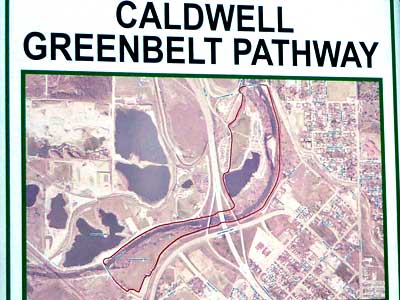



An irrigation canal ... and bridges of Highway 84

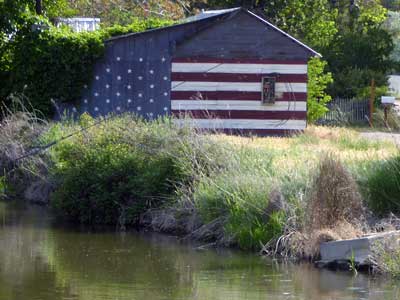


The bridge at Plymouth St


The Boise River


We returned to downtown and grabbed something yummy to drink at Indian Creek Plaza.
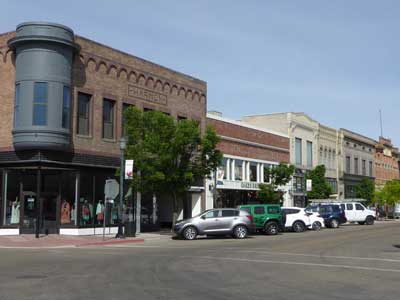







We then walked down several blocks to the Our Memories Indian Creek Museum (which covered the town's history) with the intention of just a short visit. However, Lita, one of the docents, was all too thrilled to give us an amazing several hour tour!

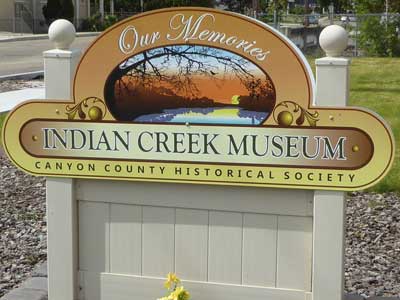
The building was once the medical office of local physician Dr. John Finck in the 1950s. Dr. Archie and Opal Gulley, who shared space in the building for years with a dental practice, founded the museum in the 1990s. In 2006, the Canyon County Historical Society accepted stewardship. The museum presently holds 25 to 30 different exhibits that are housed in the many former examination rooms and labs. Each room was set up in a different theme and filled with historic items from the old town.


Caldwell was originally known as "Bug Town" when it was just a campsite for the construction workers of the Oregon Short Line Railroad (later to become part of the Union Pacific). The name came from the numerous bedbugs in the unclean beds used by workers. In 1883, a townsite was established alongside the tracks and was named after Alexander Caldwell, president of the Idaho Land Improvement Company. Within 4 months, the town had 600 residents, 150 buildings, 40 businesses, one school, two weekly newspapers and 11 saloons. Within the next few years, it had several churches, a bank, a college, a theater group and a band. There was even a circus and an electric street car. By 1908, the population reached 5,000.


A 1908 photograph ... Frank Steunenberg (1861 - 1905) was the fourth governor of Idaho, serving from 1897 until 1901.
In 1905, several years after he had left office, Frank Steunenberg was killed outside his Caldwell house by a bomb rigged to the side gate. Harry Orchard at first claimed innocence, but after solitary confinement and intense interrogation, he signed a 64-page type-written confession detailing his years of being a paid assassin and dynamiter. His previous jobs had resulted in at least 17 other deaths. Orchard pleaded guilty and received a death sentence, but the sentence was commuted to life in prison. In 1952, at 86 years of age, he wrote in his autobiography that all of his confession and his trial testimony were true. He died in prison in 1954.

We'd already read about both Harry Orchard and Jack Davis at the Old Idaho Penitentiary, in the maximum security building (Cell House #5)!
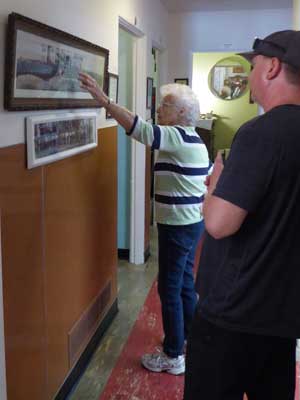
Lita begins our tour
The dining room exhibit:




(left) Hey, we were at Ste. Chapelle Winery!
The sewing exhibit, in the former examining room for children:




A barber shop exhibit:

A kitchen exhibit:



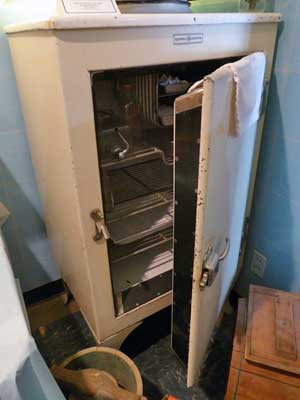
An old wood stove ... a 1922 General Electric refrigerator


Electric toaster, grinder ... and Idaho potatoes in the sink!




An ice box ... with ice tongs


(right photo) Linda (the left seated doll) is from 1946 or 47. She traveled to Missouri and back on a train trip. She was donated to the museum in 2009. Susan (right) is from the mid- to late 1930s. She arrived in Idaho by train in 1945.
return • continue

